Tomorrow night I am teaching a class that will cover meal planning, batch cooking, overall kitchen efficiency, and how to get the most out of your freezer. Since I haven't cooked up too many new things to write about lately, I thought that I'd share some of the tips and ideas for filling up your freezers on here too.
One of the best ways to put meals in your freezer is a big ol' batch cooking session. You can read all about one of my adventures in batch cooking HERE in the post I titled 18 Pounds of Chicken, 2 days, 10 meals, and my Chicken Noodle Soup Recipe. This post also includes a few books that are great resources for batch cooking and food preservation.
If you can't carve out 2 days of your schedule for a big batch cooking session, you can take on smaller projects. For example, make a double batch of easy meatballs and then divide them into bags of dinner-sized portions (depending on the size of your family). Check out these posts for quick dinners using meatballs:
Spaghetti and Meatballs in Bacon Vodka Sauce

Easy Meatball Stew

Meatball Sliders

Monstrous Meatball Subs

Super Fast and Easy Swedish Meatballs

Meatballs in Tomato Basil Cream Sauce
Or....
you could make a whole bunch of my Cheesy Beef and Bean Burritos.

You can freeze a whole pan or freeze them individually for lunch or dinner on the go!
Some of my other favorite recipes that make extra with leftovers that freeze well are:
Texas Beef Barbecue
Crock Pot Chicken Tacos or Crock Pot Beef Tacos
Savory Shredded Pork
Garden Vegetable Soup
Homemade Chicken Stock
Speaking of soup, I often freeze the leftover soup or even make extra with the intention of freezing some for a future meal. The same goes with casseroles. If possible, I try to make 2 pans and freeze one. Whenever you have an abundance of leftovers, freeze them!
Some other tips:
When you find a great sale on meat, BUY IT! When you get home, divide it into meal-sized portions, then label and freeze. You can add a marinade before freezing and the meat will marinate perfectly as it thaws. You'll have easy meals of chicken breasts, pork chops, or steaks ready for the grill or stovetop when you're ready to use them. For stir-fry, casserole, or soup you can cut the meat into strips or chunks before freezing and save yourself a step on preparation day.
You CAN freeze pre-cooked rice! Thaw the cooked rice and serve it with your stir-fry or add it to casserole and soups.
If you're browning ground beef (or bulk sausage) for a recipe, brown 5 pounds instead of 1 pound. Then freeze the rest of the meat in 1 pound portions for use in chili, spaghetti sauce, sloppy joes, or even (gasp!) Hamburger Helper. It just saves a step later.
Make extra pancakes and waffles and freeze them (place freezer paper between each to keep them from sticking). Reheat later for a quick breakfast.
Whenever I bake cookies, muffins, pies,or even cakes, I often freeze some for later.
Here are the links to some other foods that I have featured on this blog in the past that freeze well:
Pizza dough
Fresh pasta

Corn
Blueberries
Granola

Okay, so the granola doesn't need to be frozen, but it's a great batch cooking item to keep on hand. We love this recipe for breakfast or a snack
And now for some tips for freezing and using your freezer:
Freezing
•When freezing food, leave plenty of clear space around each container or package so that air can circulate around the food, allowing it to freeze quickly and evenly. After the packages are frozen, then you can stack them more efficiently.
•Freeze food in small quantities so that it can freeze faster to prevent the buildup of large ice crystals.
•Use shallow containers with wide surface area relative to depth.
•If using freezer bags, lay them flat on a chilled baking sheet until frozen solid, then stack then however you like.
•Cool food completely to room temperature before freezing.
•If you are batch cooking a large amount of meals, lower your freezer’s temperature by 10 degrees for 24 hours before your big cooking day. Once the food is frozen, return the freezer to the regular temperature.
•Be sure to mark all packages with the contents and date.
About Containers
Glass- If using glass containers, choose dual purpose types that are designed for freezing, but are also heat proof. Or know the limits of your glassware. For example: Pyrex needs to sit at room temperature for 30 minutes before putting it into the oven out of the freezer.
Plastic Containers- Make sure containers close tightly and securely and are made of plastic that will not become brittle. Look for the snowflake symbol on the bottom.
Plastic Freezer Bags- Use only bags that are labeled for freezer use. Once the bag is filled, try to squeeze out as much air as possible before sealing.
*Freeze bags flat, then stack after frozen. Food frozen flat will freeze and thaw much more quickly than food that is frozen in one big lump.
Plastic Wrap and Foil- Only use freezer-safe plastic wrap. Regular plastic wrap is porous and can use it’s cling qualities under sustained cold temperatures. After being wrapped in freezer plastic wrap, it should also be wrapped in heavy duty foil or placed in a freezer bag.
Organizing Your Freezer
•Freezers should be kept at 0 degrees C or -18 degrees F.
•Try to avoid randomly throwing items into your freezer. Instead label, date, and stack food in a way that it is easy to see. If your freezer is deep, keep a list on the door that itemizes the contents.
•For maximum efficiency, keep the freezer 75% full to keep from losing cold air each time the freezer is opened.
•Freezers should be defrosted and cleaned at least twice a year or when more than ¼” of frost builds up on the inside.
Thawing
Of course, all of that hard work spent filling your freezer with homemade meals won't seem like a time-saver if you don't remember to thaw the food before you need it.
In the refrigerator
•8 hours per pound of meat
•4 hours per pound of poultry
•6 hours per pound of fruit or vegetables
•12-24 hours for stews and casseroles
In the microwave
•Allow 6 to 8 minutes per pound of food when thawing in the microwave on low heat or defrost.
The Payoff
I've been reading a book titled Miserly Moms: Living Well on Less in a Tough Economy.
Here are few excerpts from her book that perfectly illustrate the benefits of making your own meals for the freezer:
"Convenience foods are just that-convenient. And you are going to pay for that convenience, sometimes more than you think. With some planning, you can make your own meals and snacks from scratch, and you'll cut way back on your food bill. In my (Jonni's) price studies, this is what I've found about the cost of convenience foods:
"Remember, if the manufacturer did anything to "help" you make it, you are paying them for that help"
I would contend that the benefits of making and freezing your own meals isn't only cost effective, it's also healthier. You can control the quality of ingredients and the amount of fat and preservatives that go into each meal you place on your table.
Plus, there is a certain amount of pride that results from feeding your family a meal that you made with your own two hands. : )
Alright. READY. SET. FREEZE! Haul out those freezer bags and storage containers and have at it!
















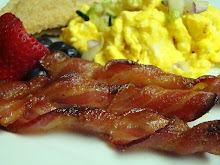
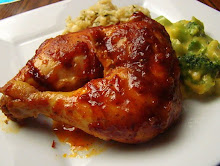
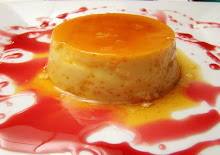
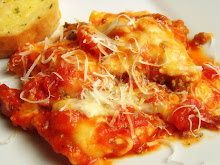
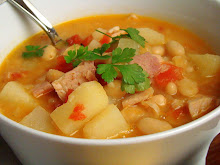


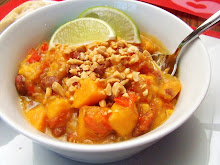

4 comments:
Krista, I LOVE this post! I am a meal freezer, too, but I can't compete with your high levels of efficiency! One thing I do when freezing in zip-top baggies (things like leftover soup or chili) is that after they are frozen, I keep rectangular plastic baskets like you'd find in the kitchen organization section at your local mega-store, and I store them standing up in the baskets. This helps things keep from shifting in the freezer and lets me stay organized, too. I have one basket for baggies of herbs and pesto, one for soup and chili, and one for other miscellaneous items. Its like my own little personal food library!
Thanks for all the great hints and tips!!! I really should start freezing meals...it would make life so much easier!!! My husband is back in school full-time and I've found that I just don't have the motivation to cook as much as I had been. I'd much prefer to thaw out something I made ahead of time, as opposed to eating something pre-packaged. I'm going to have to take a look at your links!
You amaze me and I feel so lazy. lol Great job!
Um this post is amazing:)
Post a Comment